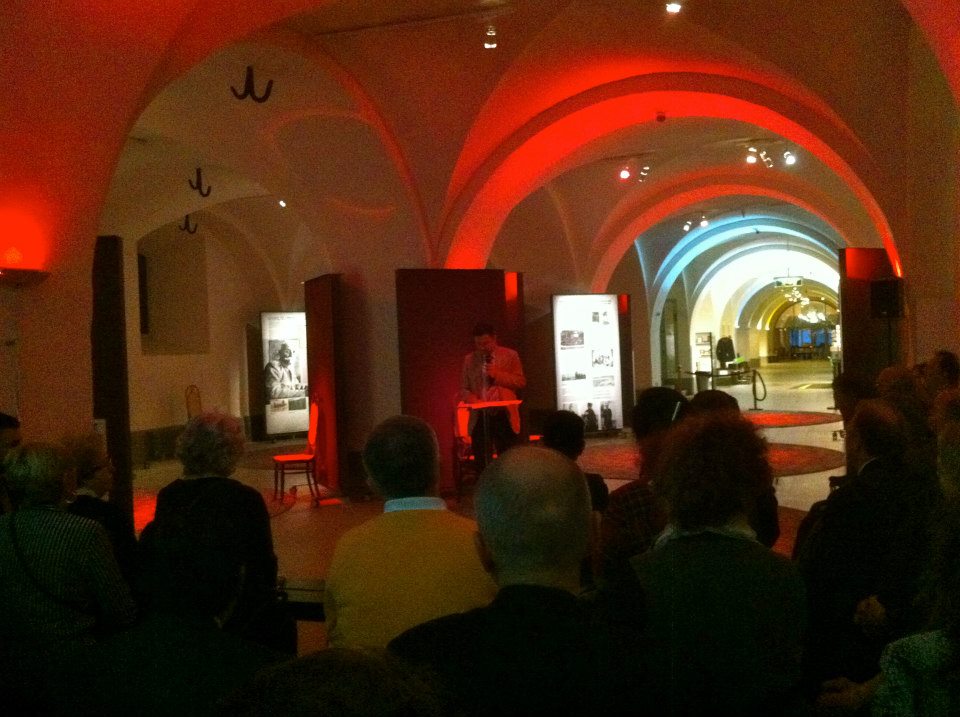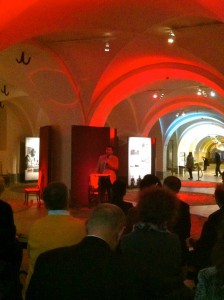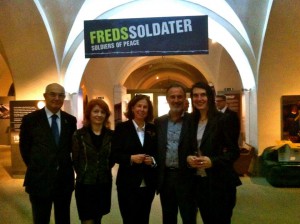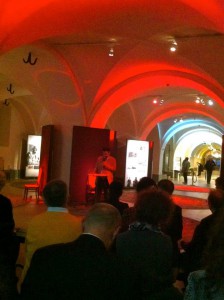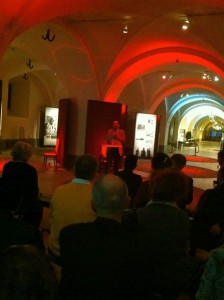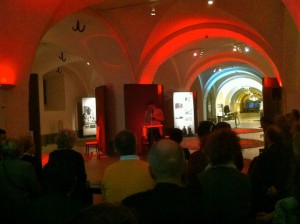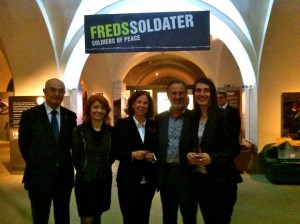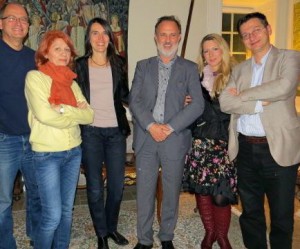SERBIA 1914
Stockholm, 4.11.2014. Army Museum
When we think about the First World War, we usually rely on knowledge that we get from TV, films, literature, textbooks and family tradition. We imagine French, German, or British soldiers stuck in the muddy trenches, surrounded by rats and decaying bodies of their fellow soldiers. They went to war with flowers and patriotic songs, being proud to be chosen to defend the fatherland; after a while they realized that they were chosen to kill or to die for the interests of the rich, privileged class. It is politically correct these days to say that it was the European Civil War, the war of European self-destruction. This pointless struggle broke out because of the greed of the ruling elites, because of their need for more colonies, territories and subjects in Africa, Asia and in the Balkans. In this shameful mess, nobody was innocent – neither Kaiser, nor Clémenceau or Lloyd George. However, those poor, disillusioned human creatures in the trenches consoled themselves that their families were safe, living in the poor conditions, but far away from the front lines and the battlefields. The only exception were those whose villages and cities were on the frontline. Moreover, on Christmas 1914, in the middle of this barbaric carnage, there was an unofficial ceasefire, when some soldiers even exchanged food and souvenirs.
Finally, those who survived came back home, having known that they fought for the prestige and power of the rich, selfish liars; in addition, those who were defeated felt that they were betrayed by the politicians, generals and capitalists. In 1914 social democrats had majority in many European parliaments; now, many of them believed that the ruling class was to be punished in the revolution. All the survivors of the Great War, as it was called back then, thought: “never again”. However, they would fight very soon, this time for the interests of their class, or again, for the honour of the nation.
But in Serbia it wasn’t like that. In the First World War Serbia was literally struggling for survival. The poor and small Balkan country with approximately 4.550.000 inhabitants had just got through two Balkan Wars, when it was attacked by the Great Power of almost 53.000.000 subjects. Some would say that Bosnian Serb Gavrilo Princip killed Archduke Franz Ferdinand, and that Serbia had to be punished. But Sarajevo Assassination was the result of the Habsburg feudal and colonial rule in Bosnia and Herzegovina, and their plans for the further Drang through the Balkan Peninsula. According to the official documents that were published in Vienna in 1930, and the memoirs of General Conrad von Hӧtzendorf, the Chief of the Austro-Hungarian General Staff, the decision to remove Serbia from the political map of Europe was made in Vienna in 1907-1908.
What India or Egypt was for the British Empire, or Indochina or Morocco for France, that was Bosnia and Herzegovina for the Habsburg Empire. It was her “civilizing mission”. In the “Age of Empire”, to put it in the Eric Hobsbaum’s terms, European powers marched into the “civilizing missions” around the world. Rudyard Kipling, inspired by the USA’s invasion of Philippines in 1898, called it “the white man’s burden” since, according to his point of view, the white race had the duty to “serve her captives’ needs” and to help those, as he says, “sullen peoples, half-devil and half-child” to become civilized, respected subjects of the British Empire. Bosnia and Herzegovina were populated by the white race, of course, but its “semi-oriental” and “half-civilized” appearance was the good excuse for Austrian “civilizing mission”. Being “Oriental”, according to Edward Said, meant and still means being culturally inferior, and thus exposed to colonization. This is the real context from which Gavrilo Princip emerges. He belongs even more to the history of 20th century anti-colonialism, than to the history of 19th century Serbian nationalism.
While the clerical, conservative Habsburg Empire was annexing neighbouring territories in more or less same way as it used to do in the 16th, 17th and 18th centuries, and while it was looking for the colonial models to the British Empire, the Serbs were trying to follow the patterns set by the Italian and German nationalists. Both Cavour and Bismarck had to fight against the Habsburgs, in order to achieve “liberation and unification”, as they used to say in the 19th century. Serbian nationalism was closer to Italian liberal than to German conservative pattern; however, Serbia was even more democratic than Italy. From the period of the Serbian revolution of 1804-1830 onwards, Serbia was the country of the small property, free peasants, merchants, artisans and intellectuals; with the Constitution of 1869 universal suffrage was introduced. The egalitarian Serbian society was devoid of any aristocracy, or clericalism. So it was the obvious antipode to the Habsburg state and society. This was the main source of the mutual hostility. Moreover, Serbian nationalism was secular, based mainly on language. This is why it claimed the right on Bosnia and Herzegovina, where the Orthodox, Muslims and Catholics spoke the same language as it was spoken in Serbia. However, Bosnia and Herzegovina were occupied by Austria-Hungary in 1878, and officially annexed in 1908. The Habsburg Empire even conserved the Ottoman feudal system; the gradual abolition of serfdom began only in 1910. After crossing the Drina River, as a border between Bosnia and Serbia, and entering Serbia, the society of free peasants, Bosnian serfs would become free men. This is why Vienna and Budapest considered Serbia to be the dangerous revolutionary threat. Gavrilo Princip himself was the son of a Bosnian serf. According to his own words, after he moved from Sarajevo to Belgrade for further schooling, he was amazed by the Serbian democracy and egalitarianism.
This is why the First World War for the Serbs was not the pointless struggle, or war for the interests of the privileged classes. Serbia was attacked in 1914, and she was defended by her brave peasant soldiers. The mass murders of the Serbian civilians committed by the Austro-Hungarian Army in 1914, and by the Bulgarian soldiers in 1917 could not be compared to anything that took place in the Western Front. It was rather comparable with what was going on in the contemporary Ottoman Empire. Moreover, almost 200,000 Serbian soldiers and civilians were kept in the Austro-Hungarian detention camps in Mauthausen, Doboj, Arad, Jindrichovice, and many other places; more than 70,000 of them died. 47,000, out of 100.000 prisoners, perished in the Bulgarian detention camps. The terror was not only directed towards the Serbs in Serbia and Montenegro, but towards the Habsburg Empire’s own Serbian subjects as well. They were even mobilized in masses and sent to the Serbian Front. This is another uniqueness of the Serbian case – the Serbs had to fight on the both sides of the same front.
So, the civilians were not safe in Serbia, and they were not far away from the front lines. When Serbian soldiers returned home in 1918, a lot of them found fresh mounds and destroyed homes. Moreover, in the Serbian case, by the time the Serbian Army was transferred to the Macedonian, Salonika Front in 1916, the war was not the trench affair. In 1914, using rapid movement of the troops, the Serbian Army defeated the Austro-Hungarians in two decisive battles, on Mount Cer and the Kolubara River. Then, defeated by the joint forces of Austria-Hungary, Germany and Bulgaria in 1915, the Serbian Government and Army refused to surrender, and they retreated all the way across the mountains of Montenegro and Albania. They were transferred with the Allies’ ships first to the island of Corfu, and then to the Salonika Front. After the Serbs and French broke the enemy lines, on 15th of September 1918, it took them only 45 days to liberate Belgrade. Bulgaria was discharged from the war and Austria-Hungary was directly endangered. Only then the German Generals Hindenburg and Ludendorff suggested to the civil authorities to start peace negotiations.
The official number of the Serbian casualties in the Great War was 1.248.000. According to the percentage of death toll (27%) in the whole pre-war population of Serbia, it can be said that Serbia was the country with the heaviest losses in the First World War.
However, to stress again, the Serbs didn’t consider this war as the pointless struggle. In 1918 they finally achieved what Italians and Germans did in 1870 and 1871 respectively. The battle for freedom and unification was won. The Serbs who were subjects to the Habsburg and Ottoman Empires were liberated. Austria-Hungary was defeated and dissolved; Yugoslavia emerged on its ruins.
As in the Serbian case, the First World War was not the pointless struggle for Poland, which resurrected on the ruins of the three old, conservative empires – Russian, Habsburg and German. It was not pointless for Romania, which achieved unification with Transylvania and Bessarabia, or for the newly emerged Czechoslovakia. It was not by accident that one of the main prophets of democracy and the rights of the “small nations” of the period, Tomaš Garrigue Masaryk, escaped in 1914 from the Habsburg Empire as political refugee, and started touring the Allies’ capitals with the Serbian passport. As the first president of Czechoslovakia, he published his war memories under the title The World Revolution. In my opinion, this expression really explains what happened between 1914 and 1918. Masaryk’s Checks and Slovaks, and Nikola Pašić’s Serbs really felt that the First World War was the struggle between democracy and autocracy. Especially after the fall of Russia in 1917, it was evidently the battle between conservative, feudal empires (Germany, Austria-Hungary, Ottoman Empire), and the democratic, liberal world of Britain, France and the USA. Because of that, in 1918 the Serbs found themselves not only on the winning side, but on the right side as well.
MILOŠ KOVIĆ, Ph.D.
ASSISTANT PROFESSOR
UNIVERSITY OF BELGRADE

